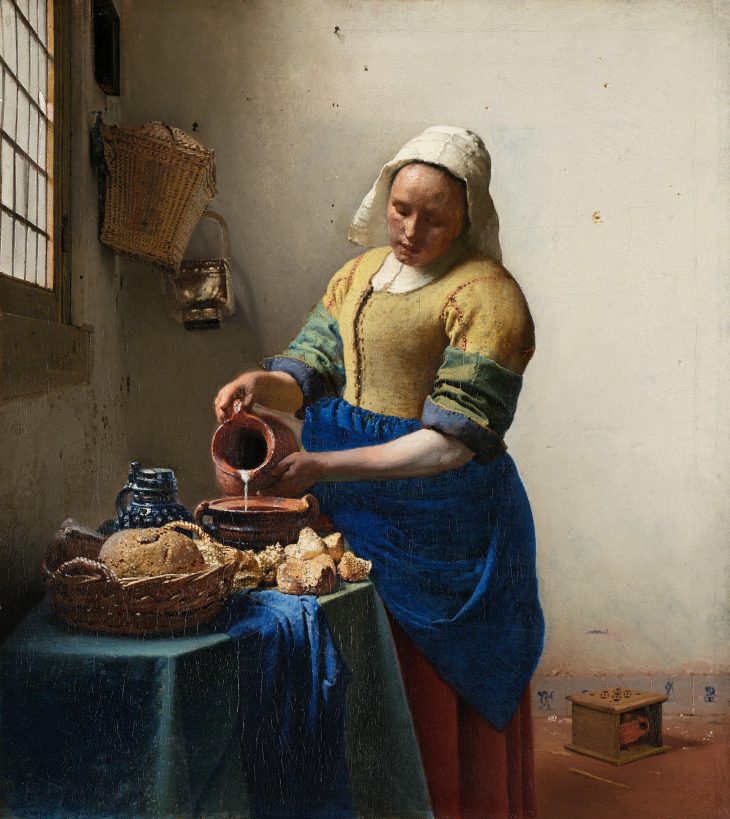Dutch Golden Age
Artistic Movements, Periods and Styles in 5 Points
We could make this publication thanks to small donations. How is 3 minutos de arte supported?
Dutch Golden Age (Dutch Baroque)
- In the 17th century, the Netherlands (there were 7 provinces, and the most important was Holland, they are all called “Holland” by extension) became independent and began a period of splendorous prosperity in economic, intellectual, and artistic matters.
- The bourgeoisie produced and traded in a favorable religious climate, since Catholicism had been replaced by Calvinism. The capitalist spirit was definitely promoted. These conditions attracted intellectuals and merchants from different parts of Europe, which generated a rich cosmopolitan culture.
- Under the new economic and power system, the bourgeois public, rather than ecclesiastical authorities, became the art consumer. As a result, the topics shifted away from being primarily religious and toward reflecting the intimacy of everyday life, mainly domestic life. Landscape, portrait, and still life became independent genres. The works of art were not “pretentious,” but rather simple and even smaller, as befitting a bourgeois dwelling rather than a palace or a church.
- If we had to highlight a difference between Dutch Baroque painting and Baroque painting in general, we would say that the tone is not so dramatic, exaggerated, “furious,” but in general, more intimate, “silent.”
- Light was functional to that spirit, and did not employ the violent chiaroscuro to draw attention to a detail or object in the scene. It was often used to create precisely that serene, peaceful atmosphere (which, because of the chiaroscuro, nevertheless had that “theatrical” air so typical of the Baroque in general). It was a lyrical, poetic element that highlighted the beauty of simple, everyday things.
Representative Artists: Rembrandt, Vermeer, Frans Hals, Ruisdael, Jan Steen, Gerrit Dou, María van Oosterwijk, Pieter de Hooch, Judith Leyster.
Image: The Milkmaid (ca. 1658). Vermeer
Recommended links:
Timeline: Artistic movements from Classical Antiquity to Rococo.
Characteristic Elements of Baroque Painting.
The Lacemaker (1669), Johannes Vermeer.
Rembrandt, Synonym of Chiaroscuro and Baroque.
Vermeer and the Camera Obscura.
You can also find more material using the search engine.
Would you like to support 3 minutos de arte?
Our project.




0 Comments